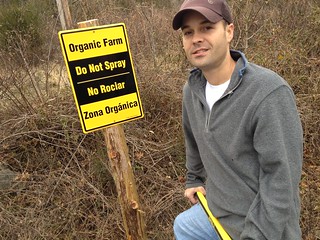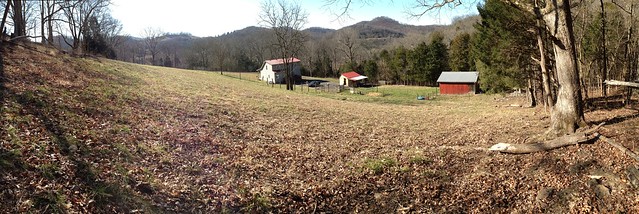 I didn’t know what to expect working with local utilities to prevent drift from chemical management of right of ways onto our organic farm.
I didn’t know what to expect working with local utilities to prevent drift from chemical management of right of ways onto our organic farm.
Each of our local utilities who need access to the front of the farm had never dealt with a request like this, but each one totally understood my goals and appreciated my willingness to help them manage right of ways without chemicals.
The key phrase there is “my willingness to help them.” That’s a commitment to some work on my part. Luckily the right of ways are down hill a good distance from the fields we are certifying as organic, but we’ll have to dedicate some weekend farm hours to clearing brush.
Some practical advice I got from Middle Tennessee Electric Membership Cooperative was to make sure bilingual signs were posted. I can send them 50 letters, but a sign is all the contracted crews managing vegetation will see.
We got this embossed aluminum 12×18 “Do Not Spray” sign online. If you are going through the process of becoming a USDA Certified Organic farm, your certifying agent can help you with draft letters to neighbors and local utilities.

a view of the organic orchard on the farm in Woodbury, Tennessee (Cannon County)
Ken asked me a little suspiciously where I got the soil samples I had him test. He said he hasn’t seen soil that good anywhere around here, and the organic matter for the farm soil is off the charts. It was low in potassium and magnesium.
That was great to hear, but it makes me want to do another test to be sure. My best guess is that the sloped field may have gotten over a 100 years or more of heavy leaf matter from nearby oak, maple and hickory trees. The soil I submitted was blackish in color with dark gray clay. Ken said it looked like someone dumped river bottom soil from a Mid West cornfield.
Another thing he saw was over the top cation exchange capacity. Normally he sees a range of 6-15 for Cannon County farms. We had a 36. It’s a great place to start for some very happy organic apples and blueberries.
Farm hours:
- completing application for USDA Organic Certification
- setting up a temporary greenhouse
- setting up a cistern on the barn
- cleaning the barn
- turning the strip crop sections in field 3 and sourcing organic clover and rye cover crops

soil samples from four sections of the farm
It’s Winter. There isn’t enough light in the day when we get home from work to do much on the farm, so we’re taking a 15 hour online course from the Rodale Institute to apply to become a USDA Certified Organic Farm. Every night’s a school night until the days get longer.
We’re learning a lot. Even if you don’t plan to become certified the program is a wealth of information to suppliment and reinforce your interest in sustainable farm practices. One of the most important things I’m learning about is building soil fertility and conservation. It’s also required by the federal government for certified producers to have plans in place to achieve that, such as amending the soil with composts and both animal and green manures as well as using cover and rotational crops.
Hour by hour – we’re hoping to have a decent Organic System Plan hammered out this month for our farm’s application. One of the first steps was to get a baseline measurement of our soil, so I took samples from four sections of field (each section with a few sample points) and sent it off for testing through the local Farmer’s CO-OP. I can’t say for sure, but the soil looks amazing. We’ll see what the test says.
Categories: education, farm, organic, values Tags: apple, blueberry, farm, organic, Rodale Institute, Tennessee, USDA Certified Organic, Woodbury
 I didn’t know what to expect working with local utilities to prevent drift from chemical management of right of ways onto our organic farm.
I didn’t know what to expect working with local utilities to prevent drift from chemical management of right of ways onto our organic farm. 








